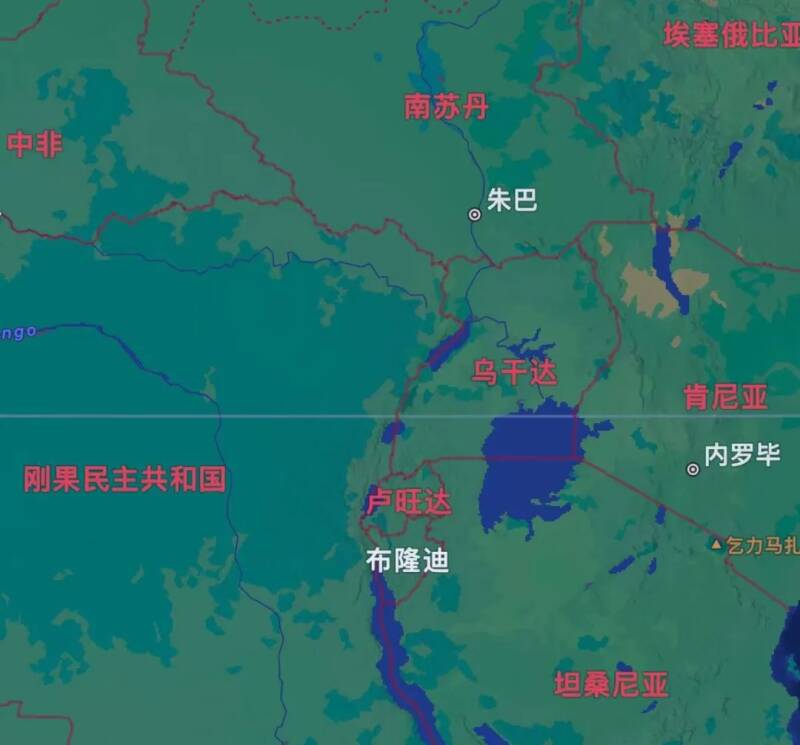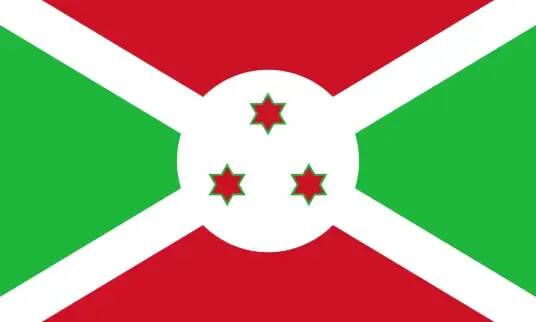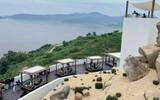Introduction to the Treatment of Coffee Producing Areas in Burundi at the Heart of Africa
Africa has always been the focus of coffee lovers, all because there are many coffee producing countries in Africa, and the country of origin of coffee is Ethiopia in Africa, but there are also coffee producing countries to be reckoned with. that is Burundi, known as the "Heart of Africa".
Burundi Burundi
The Republic of Burundi (The Republic of Burundi) is located south of the equator in east-central Africa. It is bordered by Rwanda in the north, Tanzania in the southeast, the Democratic Republic of the Congo in the west and Lake Tanganyika in the southwest, covering an area of 28000 square kilometers.

The Burundian flag is rectangular, and two crossed white wide stripes divide the flag into four triangles, the upper and lower two are equal in red, and the left and right two are equal in green. In the center of the flag is a white circle with three red hexagonal stars with green edges arranged in a font.
Among them, red symbolizes the blood of the victims fighting for freedom, green symbolizes the desired cause of progress, white represents peace, and the three stars symbolize "unity, labor and progress" respectively. It also represents the three ethnic groups of Hutu, Tutsi and Twa in Burundi, living in peace with each other and building their homes together.

There are many plateaus and mountains in Burundi, most of which are composed of the plateau on the east side of the East African Rift Valley, with an average elevation of 1600 meters. According to the topography, it can be divided into three regions, the western plain, along the Ruzizi River and the Rift Albertine plain. In addition, along the southwest coast of the country, there is Lake Tanganyika, the second largest deepwater lake in the world.
Burundi has a subtropical and tropical climate, which can be divided into four seasons throughout the year, with heavy rainy season from February to May, heavy dry season from June to August, light rainy season from September to November and light dry season from December to January of the following year. The average annual rainfall is 1000-1600 mm. With many volcanoes, fertile soil, high altitude and abundant Rain Water, Burundi is an ideal place for growing coffee and other crops.
Coffee producing area
There are five main coffee producing areas, namely, Kirundo, Kirimiro, Mumiwa Mumirwa and Buyenz, while Cayansa Kayanza and Ngozi in Buyongji are more famous. The coffee harvest period is from April to July every year, which is mainly produced by small farmers.
Buyenz: it is the largest coffee producing area in the country, bordering Rwanda, which is also divided into Cayansa Kayanza Ngozi. The climate in the Cayanza area is extremely mild, with an average temperature of 18 °C, and most small farm estates are located between 1700 and 2000 meters, with the dry season in summer. Nogoz is located in northeastern Burundi, which is similar to the elevation of Cayanza. Although its output is less than that of Cajanza, it also shows great potential for quality in recent years.
Odd leap Kirundo: low yield but good development potential in northeastern Burundi; about 1400-1700 m above sea level.
Chilimiro Kirimiro: located in the mountains of central Burundi, the average temperature is 12-18 °C. The annual rainfall is about 1100pp, which is lower than that in other producing areas. There is a professional coffee laboratory in this producing area, which focuses on the quality control of exported coffee.
Mumiwa Mumirwa: located in the north of Burundi, bordering Rwanda and the Democratic Republic of the Congo, 1100-2000 meters above sea level, the average temperature is 12-18 °C, and the annual rainfall is about 1100 mm.
Treatment method
There are currently approximately 283 treatment stations and 8 shelling plants throughout Burundi, mainly in the northern and central provinces of the country. Water washing (80%) was the main treatment, followed by sun exposure (15%) and honey treatment (5%).
The water washing treatment in Burundi is also unique, as in Kenya, and is often referred to as "double washing treatment / double fermentation treatment", which refers to the need for two washing treatments and two fermentation of coffee beans. The washing trough with this treatment method has two layers, high and low, which are used for the first and second washing respectively.
First of all, the harvested coffee berries, remove the defective fruit, remove the peel, and pour it into the high-level fermentation tank for fermentation or dry body fermentation. After fermenting for a period of time, wash the coffee beans with water and remove them to show that most of the pectin is present. The coffee beans are put into the lower fermentation tank for secondary fermentation.
It is also necessary to recycle the water every few hours during fermentation to prevent coffee beans from smelling and mildew. After secondary fermentation, wash the coffee beans with water to remove the remaining pectin. After that, the washed shell beans will be soaked in the sink for more than 12 hours, and finally dried.
Important Notice :
前街咖啡 FrontStreet Coffee has moved to new addredd:
FrontStreet Coffee Address: 315,Donghua East Road,GuangZhou
Tel:020 38364473
- Prev

How to find out by observation whether the extraction status of espresso coffee is correct? What should I pay attention to before extracting in an espresso machine?
Adjusting espresso is a skill that every barista needs to learn to master. Because once you are not proficient, it will be painful when it rains. Although espresso coffee needs to be tasted to determine whether there is a taste problem, many times, we can discover it directly through observation.
- Next

No consumption, no entry! Tourists question the unreasonable requirements of the cafe
▲ Click to pay attention| Daily Boutique Coffee Culture Magazine Coffee Workshop Nowadays, the "road to fame" of cafes is not limited to drinks. Exquisite decoration, unique location, pet-friendliness, etc. can all be used as selling points of a coffee shop, thus becoming a consumer. A place where people are willing to check in and spend. situated in the
Related
- What effect does Italian American coffee with filter paper have? Will coffee taste better if it is put on filter paper at the bottom of the powder bowl?
- What is the color difference in coffee beans? What are the characteristics of honey processed coffee beans? Why are the anaerobically treated coffee beans uneven in color?
- How does novice Xiaobai quickly get started and make coffee? Newbies learn to make coffee by hand and share the specific steps and process process!
- Costa tea has a shelf life of 100 years?! Expert: Unable to verify
- It's a huge uproar! American milk addition was rejected by Manner employees?!
- Mocha pot coffee bean recommendations| How fine and how much powder should be used for grinding? What parameter ratios do I need to use to make milk with Mocha pot coffee?
- What are the characteristics of the world's top ten coffee beans treated with Costa Rica honey? How to make black honey kadura from Tarazhu Pilon Processing Plant taste good?
- How to make deep-roasted coffee? What grinding water temperature does authentic Jamaica Blue Mountain No. 1 coffee use to brew it well?
- Selected high-grade rose summer coffee flavor tasting guide Why Panama rose summer has the aroma of flowers and fruits
- What equipment does a novice Xiaobai need to buy to learn to make coffee? Filter cup electronic scale bean grinder manual flushing pot purchase guide

